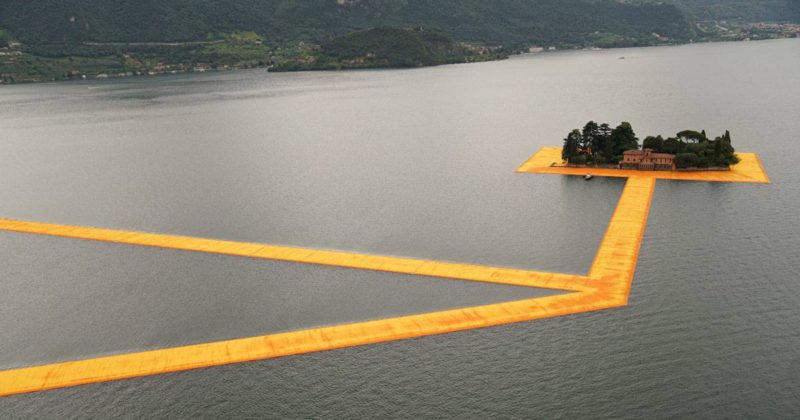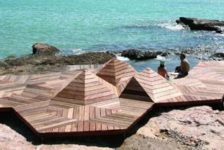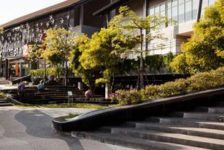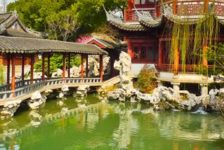The Floating Piers, by Christo And Jeanne-Claude, in Lake Iseo, Italy. For more than 40 years, the artists had this vision of a floating walkway; the project was first conceived by Christo and Jeanne-Claude in 1970 but not actually brought to life until 2016. It was Christo’s first large-scale project since 2005 when he and Jeanne-Claude realized The Gates in N.Y.C., and since Jeanne-Claude died in 2009. In 2014, when Christo and his team explored Northern Italy’s lakes, they found Lake Iseo to be the most inspiring location of them all. Lake Iseo or Lago d’Iseo is located 100 Km east of Milan and 200 Km west of Venice and is the fourth-largest lake in Lombardy, Italy; the lake is fed by the Oglio River. Through the work of Christo and his team, the place was reimagined and transformed and became the habitat and witness of a miracle coming true; to be able to walk on water. WATCH >>> MAKING OF “THE FLOATING PIERS” BY CHRISTO // ISEO LAKE // ITALY // JUNE 2016
The Floating Piers
The Floating Piers (TFP) consist of a Modular Floating Dock System of 220.000 high-density cubes covered with 100.000 m2 of a yellow cloth that changes its color depending on the weather and time of the day; it goes from a bright yellow to shades of red and gold. The cubes are joined on the sides with giant screws that pass through a ring-shaped protuberance; this connects the cubes to each other and at the same time allows movement.
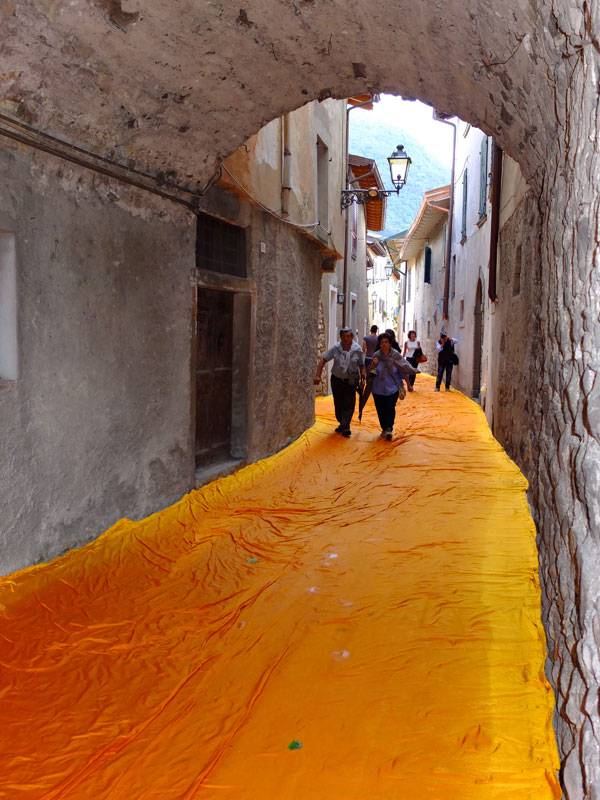
The Floating Piers, Lake Iseo, Italy, 2014-16 Photo: Wolfgang Volz © 2016 Christo
The Floating Piers go from Sulzano to Monte Isola to the Island of San Paolo; the last one is framed by the Floating Piers. The walkway is 3 Km long but the fabric continues along 2.5 Km of pedestrian street in Sulzano and Peschiera Maraglio. The piers are 16 meters wide and 35 cm high with leaning sides; to create the leaning sides effect the outer cubes were filled with water.

The Floating Piers, Lake Iseo, Italy, 2014-16. Photo: Wolfgang Volz © 2016 Christo
The construction of the piers in situ started on April 19 and was finished on June 18, the Floating Piers were opened to the public only for 16 days and nights, meaning it was open from June 18 to July 3 of 2016. On June 18 at 7:48 in the morning, the piers were finally opened to the public; it had no cost, no tickets, the access was completely free as in all of their projects, but visitors should be prepared for long lines, because for safety reasons only 11.000 people could be on the Floating Piers at the same time.
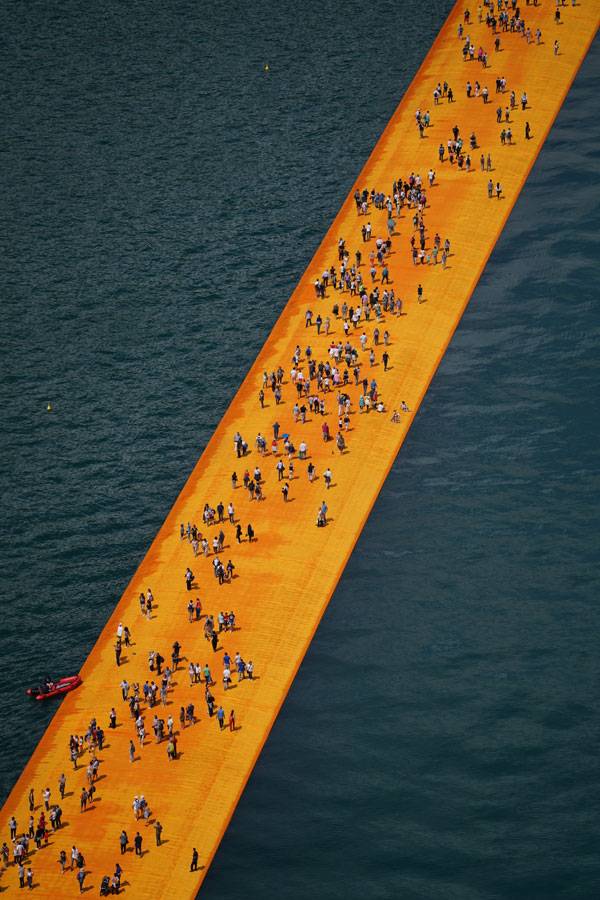
The Floating Piers, Lake Iseo, Italy, 2014-16 Photo: Wolfgang Volz © 2016 Christo
The Impact On the words of Christo, “TFP was an extension of the street and belonged to everyone”, here the artist is making a statement when he says, the street belongs to everyone, and let’s understand the term street as public space; this vast concept that wakes up all kinds of feelings and discussions, therefore the relevant fact is that he uses public space as the scenario of his work of art and in that way makes his art belong to everyone just as public space belongs to everyone, but he is also creating public space through his intervention, it is almost like his work of art is to create unimaginable public space.
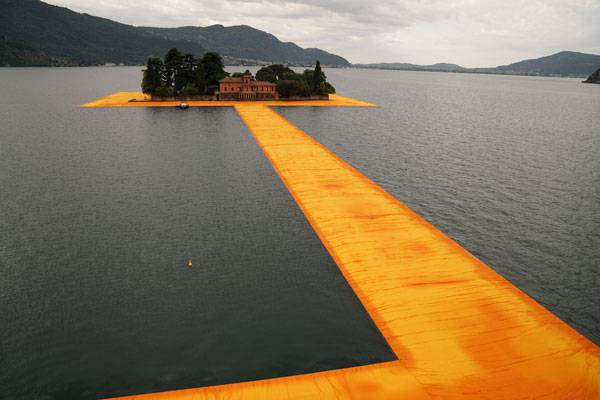
The Floating Piers, Lake Iseo, Italy, 2014-16 Photo: Wolfgang Volz © 2016 Christo
When you step in to a specific space and bring something new to that habitat – in this case, the artist brought a new and never-before-seen attraction to the town – there will be many consequences, some more tangible than others but the city and its citizens will respond to that stimulus. One of the more tangible responses was economic; the nearest stores were out of stock of their products the first day because of the many new costumers that came to see TFP and in some stores they were even selling “special socks” for walking on the Floating Piers.
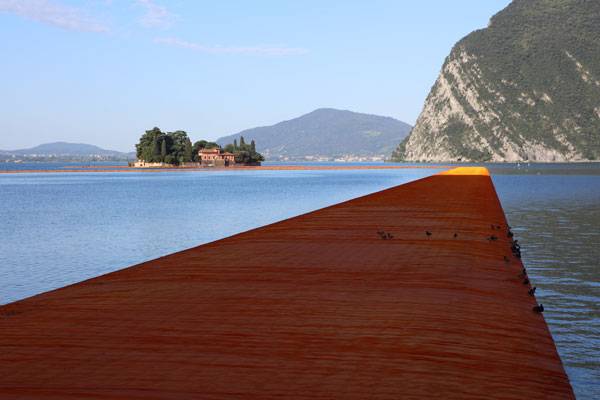
The Floating Piers, Lake Iseo, Italy, 2014-16 Photo: Wolfgang Volz © 2016 Christo
What is incredible is how the artist empowered people to take this temporary street and making it theirs as if they were living a fantasy. When asked about their experience in the TFP people responded things like: “It’s massive, it’s hard to describe, we’re so exited”, “It’s like walking on water. It’s wonderful”; others even said it felt like walking on the back of a whale.
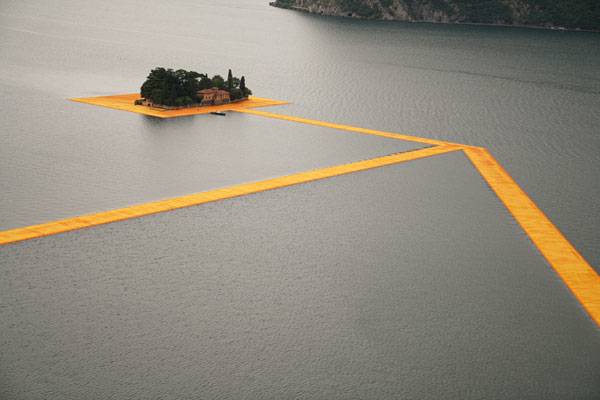
The Floating Piers, Lake Iseo, Italy, 2014-16 Photo: Wolfgang Volz © 2016 Christo
For Kevin Lynch to have places where we could contemplate a city was an important part of feeling that you belonged to a city, of feeling you were a citizen. This project created a new point of observation, a new experience, a new way to contemplate that specific habitat; in conclusion, the project enriched the experience of going to Lake Iseo forever, even when – physically – it is no longer there, that happening will stay on in the collective memory of people for a long time. Well thought-out and executed art can transcend itself and become part of the landscape and the memory of the people.
Do you think that art should come out of the museum more often and directly impact the life of a city?
*After the 16 days all the elements were removed and industrially recycled.
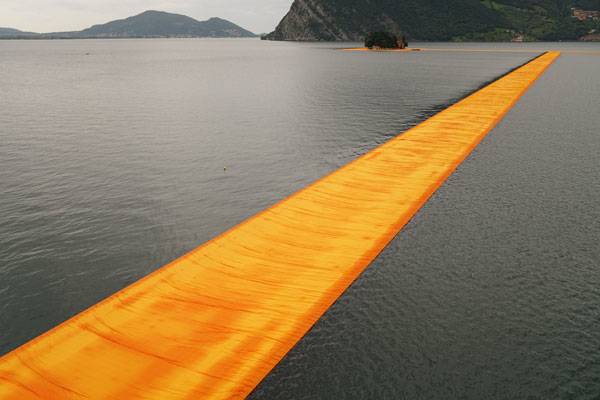
The Floating Piers, Lake Iseo, Italy, 2014-16 Photo: Wolfgang Volz © 2016 Christo
Full Project Credits For The Floating Piers:
Project Name: The Floating Piers
Artist: Christo And Jeanne-Claude
Christo’s Project Team: Vladimir Yavachev – Operations Director, Wolfgang Volz – Project Manager And Official Photographer: Josy Kraft – Registrar/curator And Germano Celant – Project Director.
Location: Lake Iseo, Italy.
Area: 100.000 M2
Total Project Value: 16’000.000 E
Funding: The Artist Own Money
Recommended Reading:
- Becoming an Urban Planner: A Guide to Careers in Planning and Urban Design by Michael Bayer
- Sustainable Urbanism: Urban Design With Nature by Douglas Farrs
- eBooks by Landscape Architects Network



